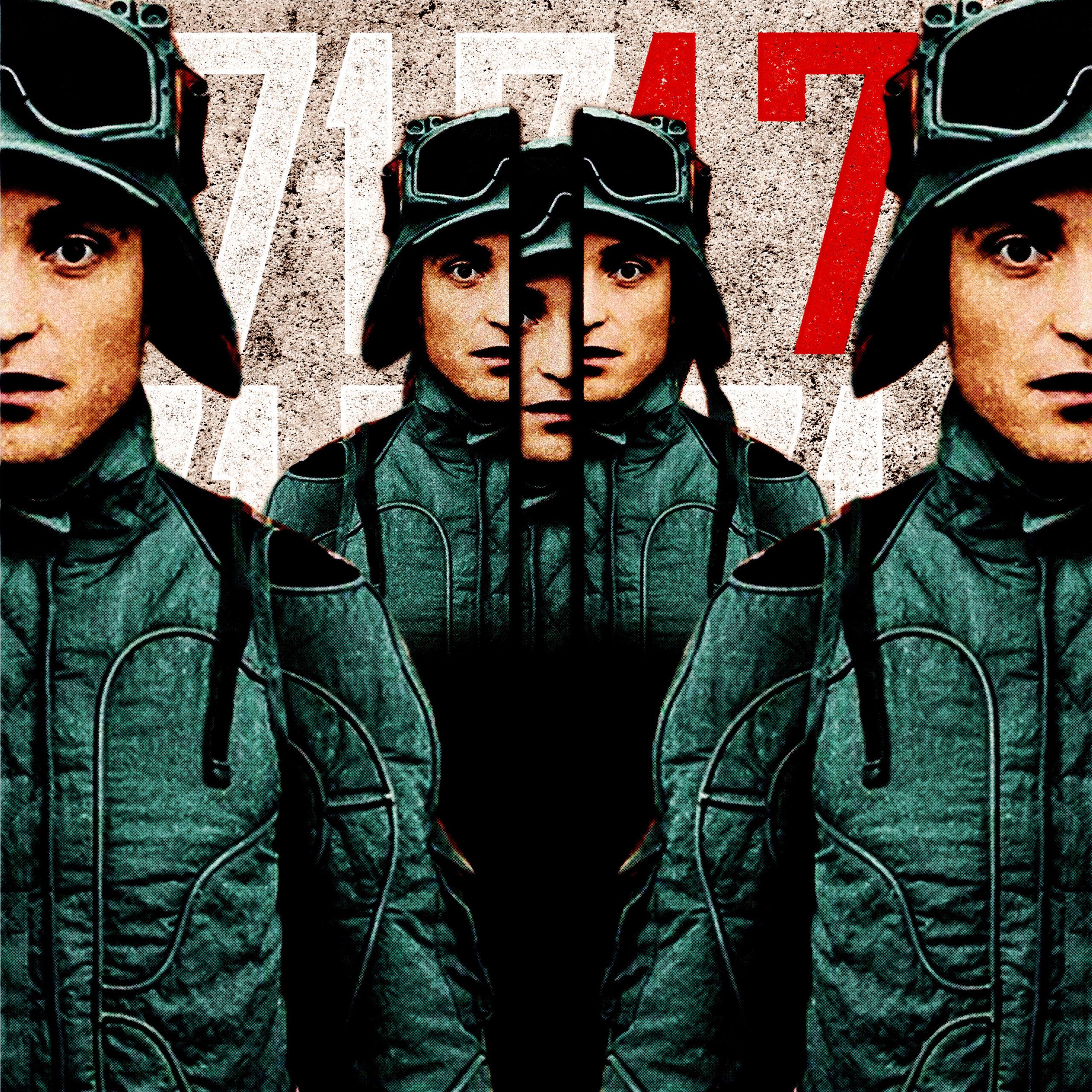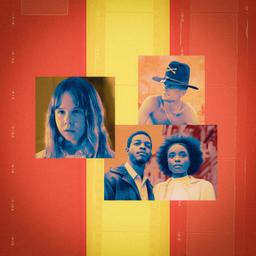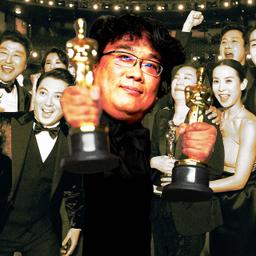
There are two Robert Pattinsons in Mickey 17—one sweet and dopey, one sullen and sharp, each the other’s distorted mirror image. They’re both clones hatched as part of a futuristic experiment designed to literalize the concept of “human resources”; the spaceship they call home is crawling with hundreds of would-be colonists, but it’s still not big enough for the both of them. Gradually, the pair’s rivalry deepens into something like mutual respect and care. It’s important to learn how to live with oneself.
There are also two Bong Joon-hos in Mickey 17, and unfortunately, they’re not so easily reconciled. At his best, Bong contains multitudes: He’s a goofball genre specialist with a sentimental streak, a kinetic visual storyteller, and a contemplative social critic. Mickey 17 is easily the South Korean director’s most expensive movie to date, the result of being handed a big-studio blank check in the aftermath of Parasite. Conceptually, it’s very much of a piece with its predecessors, a delirious dystopian vision overlaid on an anti-capitalist allegory and a rallying cry about the necessity of raging against the machine. But it’s also palpably divided against itself, and that fissure leads Bong to the precipice of something perilous and unprecedented: a plunge into failure on his own double-barreled, idiosyncratic terms.
Failure is a major theme in Bong’s work, dating back to the futile police investigation at the center of his 2003 breakthrough, Memories of Murder, a period piece about an unseen serial killer who doesn’t just evade his pursuers but the viewer, as well. Bong doesn’t mock failure; he sees it as essential to the human condition. His characters are lovable losers whose victories, when they occur, tend to be Pyrrhic or provisional. Think of the climax of The Host, where a father loses his daughter only to adopt a son, or the coda of Parasite, which transforms a man’s desire for upward mobility into a tableau of imprisonment. His movies are satisfyingly unsatisfying.
It takes a special sensibility to make downers feel so thrillingly weightless. There are moments of extreme cruelty in Bong’s films, but they seem to belong to the characters and not the filmmaker. He’s ruthless, but not mean-spirited; if anything, he’s interested in the causes and consequences of cruelty, one of which is a profound and paralyzing sense of helplessness. His interest in vulnerable underdogs is sincere, and so is its flip side, which is a fascination—bordering on obsession—with control. Bong’s camera movement is playful but also purposeful, mapping exterior environments and interior space so that we always have our bearings. He likes skewed angles and surprising intrusions into the frame; he’s at home in winding labyrinths or multileveled, video-game-style spaces. The sequence in The Host where a missing child manifests around the edges of her family’s silent dinner party—an ephemeral guest of honor somewhere between a ghost and a memory—is the work of a master. The viselike grip of his direction still permits plenty of sleight of hand.
Bong’s hold on the material in Mickey 17 is shakier than usual, however, and it shows. While the filmmaker has quelled rumors that he battled with Warner execs over the final cut, there’s nevertheless something erratic about the storytelling here, and some of the characterizations. In lieu of the screwball velocity of a superior thriller like Mother—perhaps Bong’s most beautifully controlled movie, despite the unhinged material—there are the palpitations of a filmmaker trying to find—and spike—his movie’s pulse in the editing room. Viewers accustomed to being maneuvered and manipulated by Bong’s balletic visual choreography may find themselves in the strange position of resisting Mickey 17 instead of simply submitting to its thrall. It’s hard to go with the flow when there isn’t any.
The most successful element of Mickey 17 is the casting of Pattinson, who’s holding steady as the go-to star for art-house stalwarts in search of financing, and who’s got the right stunned, recessive presence to play a character growing uneasily inured to the paradox of his own (im)mortality. His Mickey mines a rich vein of greasy charisma that’s adjacent to his career-best work in Good Time; here, he’s cheesy, not sleazy, with baby-doe eyes and a reedy voice straight out of the Tom Hardy playbook. (In interviews, Pattinson explained that he based the character’s cadence on Steve Buscemi in Fargo.)
Mickey Barnes is a failed fast-food entrepreneur in hock, led to financial ruin by his dim-witted childhood pal Timo (Steven Yeun). (Their plan to get rich in a dystopian hellscape by selling macarons indicates the absurdity of the world-building on display.) On their tail: a ruthless gangster whose preferred method of punishing deadbeats is to let his associates have at them with a chainsaw. It’s a punishment he likes to capture in ultra-high-definition video so that he can revisit the bloodletting at his leisure. (The film’s dateline is 2054, by which time it’s anticipated that we will have commercially available 32K cameras.)
Petty, bloodthirsty tyrants recording acts of violence for posterity is one running motif in Mickey 17. The bloody subdivision of body parts is another. Not content to simply skip town, Mickey and Timo hightail it to outer space, signing up for a terraforming company with designs on converting a remote ice planet, Niflheim, into a start-up paradise. Mickey’s chosen gig is as a TaskRabbit who’s predetermined to draw the short straw. He’s there to do the most dangerous jobs with a smile. On his first day, suited up and clinging to the hull of the spaceship, Mickey’s hand gets severed at the wrist and floats languorously past the spaceship’s observation window, not that any of the passengers are paying attention.
What Mickey has signed up for—much to his retrospective chagrin—is his own private purgatory: the gig economy according to Sisyphus. His official job title is an “Expendable,” which means pretty much what it sounds like. For starters, Mickey’s memories and personality are uploaded to a brick-sized hard drive. Then, after he gets killed doing something dangerous, the data gets fed back into a machine that spits out three-dimensionally printed meat bags tailored to Mickey’s exact biological specifications. Live, die, repeat. Any metaphysical awe that might come with being the subject of such regularly scheduled resurrections fades as Mickey comes to realize that there is a fate worse than death: perpetual servitude, with all the pain and suffering and none of the sweet release. Each time we see Mickey being reborn—from Mickey 1 to Mickey 2 and forward into his eponymous incarnation—Bong shoots it as an obscene, conjoined parody of natural childbirth and an office photocopier, with Pattinson’s naked body jostling and jolting like a loose piece of paper trapped in the queue.
So far, so funny, and Pattinson fully inhabits Mickey’s sense of resignation and existential whiplash. He has nobody to blame but himself for his predictability: He’s made his (death) bed, and he’ll have to lie in it, over and over again. Mickey’s self-deprecation is meant as an indictment of larger systems that treat people like commodities. His willingness to be chewed up and spit out surfaces when his 17th incarnation slips up on Niflheim’s surface and winds up supine in a cave at the mercy of a group of scuffling, shaggy, vaguely mammalian creatures known as Creepers. As the monsters advance, he happily anticipates being swallowed whole rather than slowly freezing to death as a self-described “meat popsicle.”
Unexpectedly, the aliens show mercy and return 17 to his crewmates, who have already printed out his replacement. Mickey 18 is more assertive, and more of an asshole: He isn’t ashamed of his survival instincts. At first, only Mickey’s lover, Nasha (Naomi Ackie), is wise to the proliferation of “multiples” on board the spaceship, and, humorously, she’s turned on by the possibility of a doppelganger-flavored ménage à trois. Her live-wire sexiness marks her in distinction to the abstinence being peddled by the mission’s leader, Kenneth Marshall (Mark Ruffalo), who’s high on the musky fumes of self-aggrandizement. He’s propped up in his proclamations by his diabolical wife, Ylfa (Toni Collette), whose interest in converting Niflheim has to do with using the Creepers as raw ingredients in her own private line of gourmet sauces.
Conspicuous consumption—the enjoyment of rare delicacies slathered in the blood of innocents—provides a bridge between Mickey 17 and Bong’s previous English-language films. Recall the line in Snowpiercer about the deliciousness of infant flesh, or the nightmarish slaughterhouse imagery of Okja. The other thing these films have in common is an insistence on a florid, stylized whimsy that may reflect how Bong perceives the Hollywood product in general—and ugly Americanism in particular—but stretches his gift for elasticizing tone to a breaking point. Subtlety may be overrated as a rhetorical tool, especially when an artist is trying to reach a mass audience, but it’s also risky to push too far in the direction of caricature. Ruffalo and Collette can be marvelous actors, but there’s no real threat in their presence. They’re like guest stars in a Saturday Night Live cold open, and while the transparency and redundancy of their shtick is surely part of the point, it also gets tired fast.
That same numbing sense of atrophy—of muscles that aren’t quite flexing—applies to the long, flabby midsection of Mickey 17, which keeps circling around genuinely tricky ideas about what it means to confront different aspects of self yet never touching down on anything solid. The spaceship isn’t a memorable space like the apartment block in Barking Dogs Never Bite or the mansion in Parasite; the production design evokes the industrial clutter of vintage Terry Gilliam without necessarily reimagining it. The biggest problem, though, is that, for the first time in his career, Bong seems to have conflated pushiness with momentum. Snowpiercer and Okja weren’t subtle, but their trajectories as extended chase movies were clean and precise. It was clear who was pursuing whom, and why. The more Mickey 17 tries to bring its characters together, the more chaotic—and less intuitive—it becomes. The swirling snowstorms of the final sequences suggest a filmmaker trying to fill out a big canvas, as well as the murkiness of his vision. The inevitable rallying of the troops in the homestretch doesn’t feel organic to the characters and their relationships. Ditto the stirrings of interspecies solidarity, which made Okja so moving as a Spielberg-Miyazaki hybrid. For the first time, it’s like we’re getting Bong by numbers, and they don’t really add up.
In this context, that recurring image of Pattinson on the laboratory slab, being pushed out into the world, becomes resonant in a different and disconcerting way. Mickey 17 is an empty vessel, made precisely to order out of recycled materials, and imbued with memories of the past. The question is whether his personality is ultimately reducible to product.
The same goes for the movie bearing his name.





